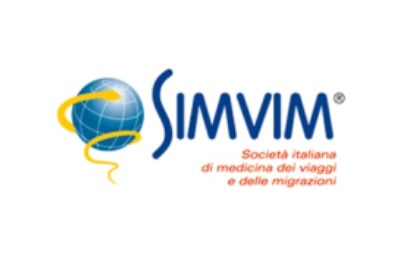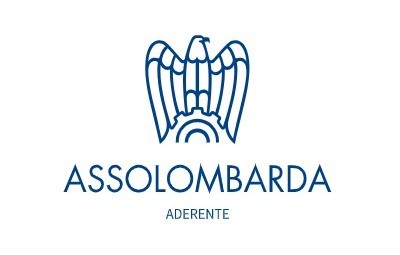Rubella
Rubella is an infectious disease caused by the Rubella virus that only affects humans. Along with measles, whooping cough, mumps and chickenpox, it is considered one of the most common childhood diseases.
CAUSES
The etiological agent responsible for rubella disease is the Rubella virus, a single-stranded RNA virus. When viewed under an electron microscope, it is spherical in shape with a diameter between 40 and 80 nm. The genome is a single-stranded RNA of positive polarity, enclosed by an icosahedral capsid.
There are two glycoproteins, E1 and E2, embedded in its surface. The E1 glycoprotein acts as a viral antigen that enables virus recognition and is responsible for the adhesion of the virus to the target cell. The E2 glycoprotein ensures the correct folding of the E1 glycoprotein.
The rubella virus belongs to the TORCH complex, an acronym for a set of pathogens that are particularly serious if contracted during pregnancy.
TRANSMISSION
Rubella is an airborne virus that is most commonly transmitted by very small respiratory droplets emitted by an infected person when they sneeze, cough, or even talk. The disease is also transmissible via direct contact with nasopharyngeal secretions.
The contagious period of the disease is usually 7 days before to 7 days after the appearance of the exanthem, but the virus may still be present up to 14 days after the rash.
The disease can be transmitted vertically, from the infected mother to the foetus, and new-borns can spread the virus for several months and up to a year after birth.
.png)
GEOGRAPHICAL DISTRIBUTION
Rubella can be found all over the world. Humans are the only reservoir of this airborne virus. With the introduction of vaccination, the incidence of the disease has significantly declined. In 2009, the Americas was one of the first regions in the world to eliminate the rubella virus.
In 2018, according to the latest data published by WHO, 42 of the 53 states in the European Region achieved the goal of interrupting the chain of transmission of the virus for at least 12 months. In other countries (including Italy), rubella is still endemic.
A total of 579 cases were reported, in 2018, with Italy in third place for the number of cases, after Poland and Germany.
Between 1971 and 1996, the incidence of rubella in Italy was relatively high and shows an epidemic trend that peaks every 4-6 years, with 30,000 to 60,000 cases reported per year. These figures began to decline from the late 1990s, when vaccination was introduced.
Integrated health surveillance of measles and rubella was introduced in 2013. There have been 252 cases of rubella reported nationwide from 2013 to 2019, with a spike in 2017 (68 cases). Laboratory-confirmed cases, on the other hand, are 50%.
SYMPTOMS
After an incubation period ranging from 12 to 23 days (the average is 18 days), the first symptoms occur, and are evident in 50% of cases. The clinical course of the disease can be divided into two categories: acquired rubella and congenital rubella.
Acquired rubella
The term acquired means that the infection occurred during the postnatal period. In children, the disease is usually benign, with slightly challenging symptoms in adults.
In the initial, short-lived stage (approx. 24-36 hours), the patient shows signs of fever, headache, joint pain, pharyngeal inflammation, and swelling of the lymph nodes located to the side of the ears and behind the nape of the neck.
Subsequently, slightly raised spots, called maculopapulosis, appear on the face and nape of the neck. The rash is pinkish or pale red in colour, with round spots of about 2-5 mm in size that do not tend to converge, which is very important for differential diagnosis with measles. The rash usually starts on the face and neck before progressing down the body, and normally clears within 2-3 days. A hot bath or shower accentuates this rash.
A petechial exanthema of the soft palate, called Forchheimer spots, have been observed, particularly in children; it is a characteristic but not a pathognomonic sign of the disease (i.e. not diagnostic of rubella).
Rubella infection tends to heal within a few days, providing permanent immunity. Postnatal rubella complications are less frequent than with measles but are not entirely negligible.
However, some complications of rubella include acute arthritis and temporary arthralgias, which are particularly common in adults. The action of the virus can compromise the immune system by causing thrombocytopenia (decreased platelet count) and encephalitis, which is somewhat less common but can be fatal.
Congenital rubella
This condition can occur during pregnancy and affects women who are not immune to the disease.
During the first few weeks of gestation, rubella infection can result in an increased risk of miscarriage, multiple foetuses and cardiac malformations, such as peripheral pulmonary stenosis and ventricular septal defect. It addition, the virus can cause eye defects, such as cataracts, glaucoma, and retinitis pigmentosa, as well as neurological damage, such as microcephaly.
Subsequently, congenital rubella syndrome (CRS), characterised by a chronic rash, hepatitis, interstitial pneumonia and other issues, may occur. The consequences of rubella on the foetus are many, and can also result in mental retardation and speech disorders.
Infants with congenital rubella can shed the virus for several months to up to a year. In February 2018, Italy recorded only one confirmed case of congenital rubella. However, a peak was recorded in 2008, with 30 confirmed cases.
DIAGNOSIS
Diagnosis of rubella is primarily based on clinical symptoms, but it can be complicated as it can be confused with mononucleosis or measles, especially when the patient has a mild form of the disease.
Confirming diagnosis relies on laboratory tests, which mainly look for the presence of rubella-specific immunoglobulins, which are present during the early stage of the disease.
The virus can be isolated by identifying its genome using the Reverse Transcription PCR technique.
TREATMENT
The only treatment for rubella is symptomatic. Rest and adequate diet form the basis of treatment.
The doctor may prescribe medication in case of arthritis or antibiotics if bacterial complications are present.
PREVENTION
Rubella eradication has been a primary goal of WHO and Italy since 2015, with the National Plan for the Elimination of Measles and Congenital Rubella.
Vaccination is the only effective method to prevent the spread of this virus. The vaccine is administered in combination with mumps and measles, or also varicella.
The vaccination calendar foresees immunisation against measles, mumps, rubella and varicella (MPRV), from 12 to 15 months for the first dose. A second booster shot should be administered around the age of 5-6 years.
Unvaccinated and nonimmune individuals can still take the vaccine with a gap of 4 weeks between the two doses.
As the vaccine contains live attenuated virus, vaccination is contraindicated in some people, such as pregnant women and immunocompromised individuals. For this reason, it is critical that women who are not immune to rubella are vaccinated at least one month before conception to prevent congenital rubella.
Bibliography
Walker P. , Siddell S., Lefkowitz E., Mushegian A., Dempsey D., Dutilh B., Harrach B., Harrison R., Hendrickson R., Junglen S., Knowles J. Kropinski A., M., Kuhn J., Changes to virus taxonomy and the International Code of Virus Classification and Nomenclature ratified by the International Committee on Taxonomy of Viruses (2019), Virology Division News, 2019
Rosolia, Ministero della Salute, 2019, disponibile a:
Aspetti epidemiologici, Istituto Superiore della Sanità, 2019, disponibile a:
epicentro.iss.it/rosolia/epidemiologia
Morbillo & Rosolia News Aggiornamento mensile Istituto Superiore della Sanità, 2020, disponibile a:
epicentro.iss.it/morbillo/bollettino/RM News 2020 62.pdf
Rugarli C., Obiass M., Medicina interna Sistematica, Quinta Edizione. Masson 2015.
Moroni M., Spinello A., Vullo V. Manuale di Malattie Infettive. Edra LSWR, Masson, 2018.
Other Sources: WHO





